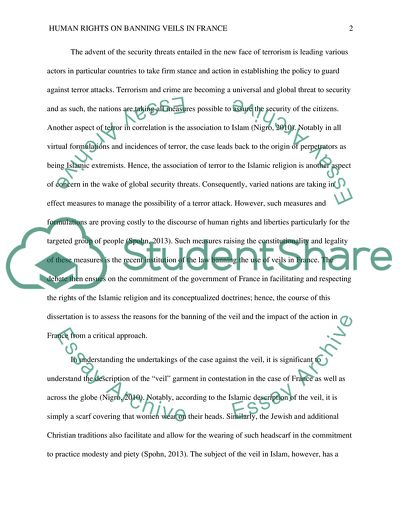Cite this document
(Human Rights on Banning Veils in France Coursework Example | Topics and Well Written Essays - 2000 words, n.d.)
Human Rights on Banning Veils in France Coursework Example | Topics and Well Written Essays - 2000 words. https://studentshare.org/politics/1875980-human-rights-on-banning-veils-in-france
Human Rights on Banning Veils in France Coursework Example | Topics and Well Written Essays - 2000 words. https://studentshare.org/politics/1875980-human-rights-on-banning-veils-in-france
(Human Rights on Banning Veils in France Coursework Example | Topics and Well Written Essays - 2000 Words)
Human Rights on Banning Veils in France Coursework Example | Topics and Well Written Essays - 2000 Words. https://studentshare.org/politics/1875980-human-rights-on-banning-veils-in-france.
Human Rights on Banning Veils in France Coursework Example | Topics and Well Written Essays - 2000 Words. https://studentshare.org/politics/1875980-human-rights-on-banning-veils-in-france.
“Human Rights on Banning Veils in France Coursework Example | Topics and Well Written Essays - 2000 Words”. https://studentshare.org/politics/1875980-human-rights-on-banning-veils-in-france.


